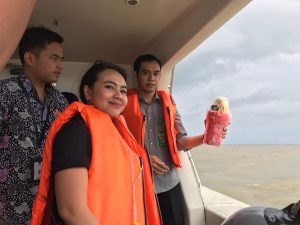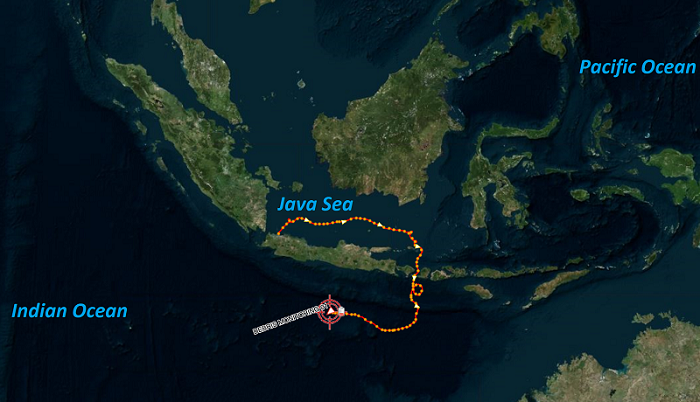Indonesia Chooses Space Technology in the Fight Against Pollution
- May 12, 2020
- Category: Flash info

Plastic waste in the oceans has disastrous consequences for the environment and human health, and Indonesia is the world’s second largest polluter. The government, aware of the urgency, is exploring many avenues to combat this scourge. The authorities have published a national plan to combat marine pollution, which aims to reduce plastic waste by 75% by 2025.
To help achieve this target, local stakeholders called on CLS to understand how waste moves throughout Indonesia’s waterways. This information is crucial in order to optimize waste collection at sea or on the coast.
Understand, then Take Action
 Scientists from the Research and Development Agency of the KKP (Ministry of Maritime Affairs and Fisheries) are currently conducting a study on how plastics circulate within hydrological and oceanic networks, in partnership with the LIPI (Indonesian Institute of Sciences).
Scientists from the Research and Development Agency of the KKP (Ministry of Maritime Affairs and Fisheries) are currently conducting a study on how plastics circulate within hydrological and oceanic networks, in partnership with the LIPI (Indonesian Institute of Sciences).
Indonesian researchers are thus exploring how to predict debris landing on Indonesian coasts and the link with the most polluted rivers. To optimize waste collection, it is important to understand the impact of currents and wind on the surface of the water, because they carry the plastic from the rivers to the sea or to the coasts. Understanding these processes is essential for organizing waste collection teams and methods.
To discover or confirm these locations, and study the currents, the KKP teams have placed satellite transmitters at the mouths of the rivers that carry the most plastic waste during heavy rains.
Highly Autonomous Transmitters
The transmitters delivered by CLS are the MARGE-T. They are easy to use and self-powered. As small floating objects (134mm diameter, 280mm height for a weight of about 1kg), they are designed to drift and float on the surface. Connected to satellites, they can track and send data for over 450 days.
A Test Phase before Massive Deployment
With these transmitters using the ARGOS satellite system, LIPI scientists will be able to observe and confirm their hypotheses. With positions transmitted every hour, CLS teams reconstruct the trajectory of the transmitter and thus the pollution for Indonesian scientists. Nearly 70 transmitters will soon be deployed to help in the fight against this massive pollution.

